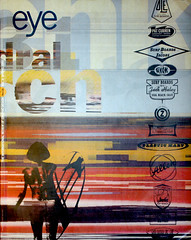Spring 1995
Editorial Eye 16
Is the education that graphic designers receive adequate to meet the changing role of the profession in the 1990s? To some, the question may seem odd. After all, there are many successful designers working at a high level in the profession who have had little or no formal training in design. If it is possible to do so well on the strength of talent and the right breaks, how much difference can the nature of the education make? The ambiguous status of graphic design education is further confirmed by the fact that anyone can set up shop as a graphic designer; no certification is required. Meanwhile design education, as Michèle-Anne Dauppe argues in ‘Agenda’, has concentrated on the practical skills that industry needs. As a result, its academic standing, compared to other university subjects, has been low. This is now beginning to change, because graphic design itself is changing as it makes the leap from page to screen. It is a mistake, says Katherine McCoy, interviewed in this issue, to think of multimedia as no more than a subset of graphic design – just another option, like typography or editorial design, in the menu of classes to be taken; rather it is a new form of audio visual communication which will require practitioners to be educated to the highest level. And graphic design is becoming inexorably more ‘academic’ in another sense. There is increasing interest in the study of the subject’s history and theorisation, and its social, cultural, technological and institutional contexts. But for reasons of educational politics and departmental expediency, educators committed to such research tend to argue for its usefulness as a way of broadening the awareness of young designers, helping them to ‘cultivate an identity’ and develop a ‘position’. While these are entirely worthwhile aims, they seem in some ways to impose an artificially vocational restraint on what such study might achieve. The time may be coming when it will be possible to take a first degree in graphic design history as a humanity, with no practical component, just as you can in literature or art history. This may sound like a questionable development to practising designers, but it would be clear evidence that the profession’s contribution had at last been understood by the academy, and underwritten as a subject worthy of study.
Rick Poynor, Eye editor, London
First published in Eye no. 16 vol. 4, 1995
Eye is the world’s most beautiful and collectable graphic design journal, published quarterly for professional designers, students and anyone interested in critical, informed writing about graphic design and visual culture. It is available from all good design bookshops and online at the Eye shop, where you can buy subscriptions and single issues.

